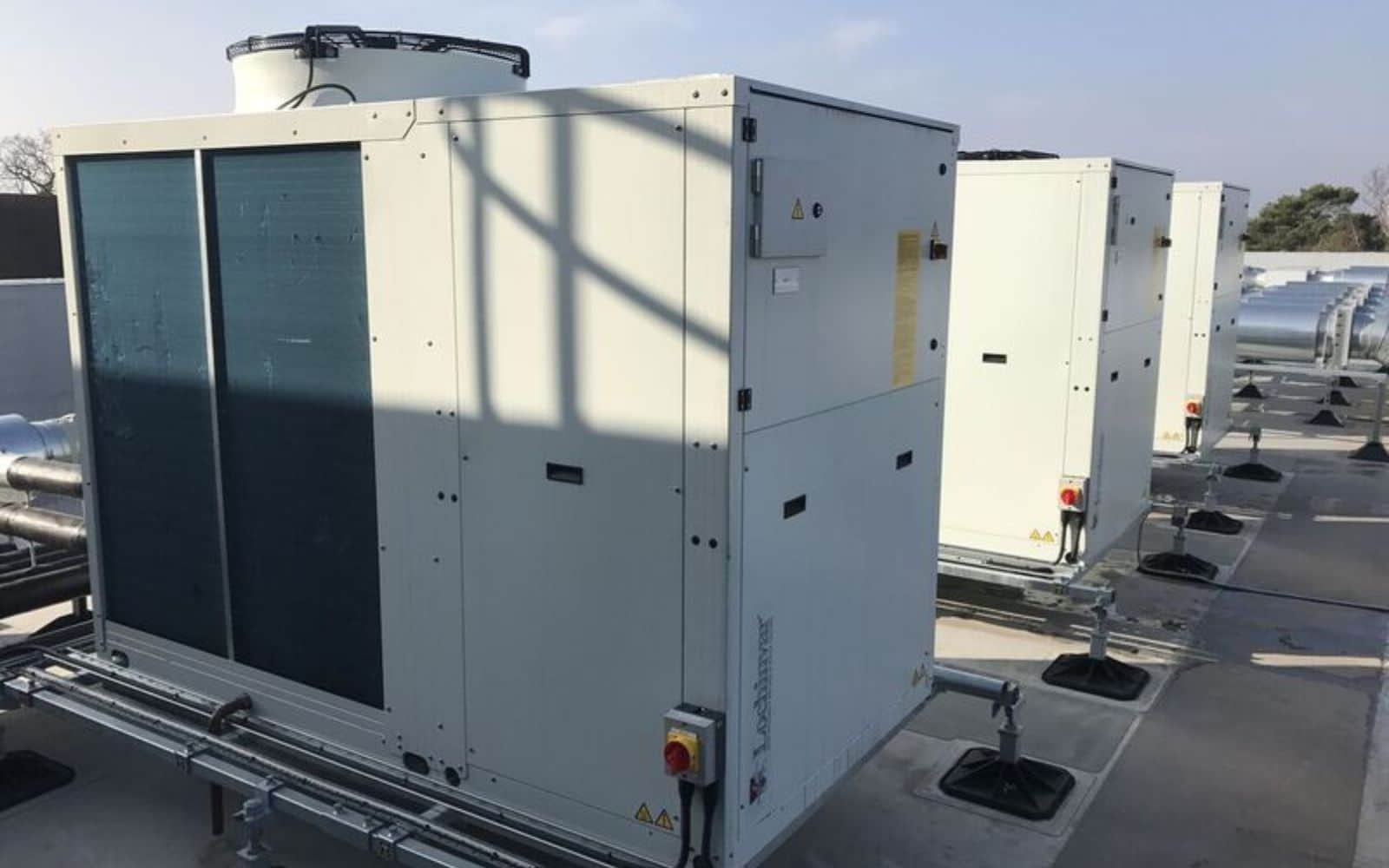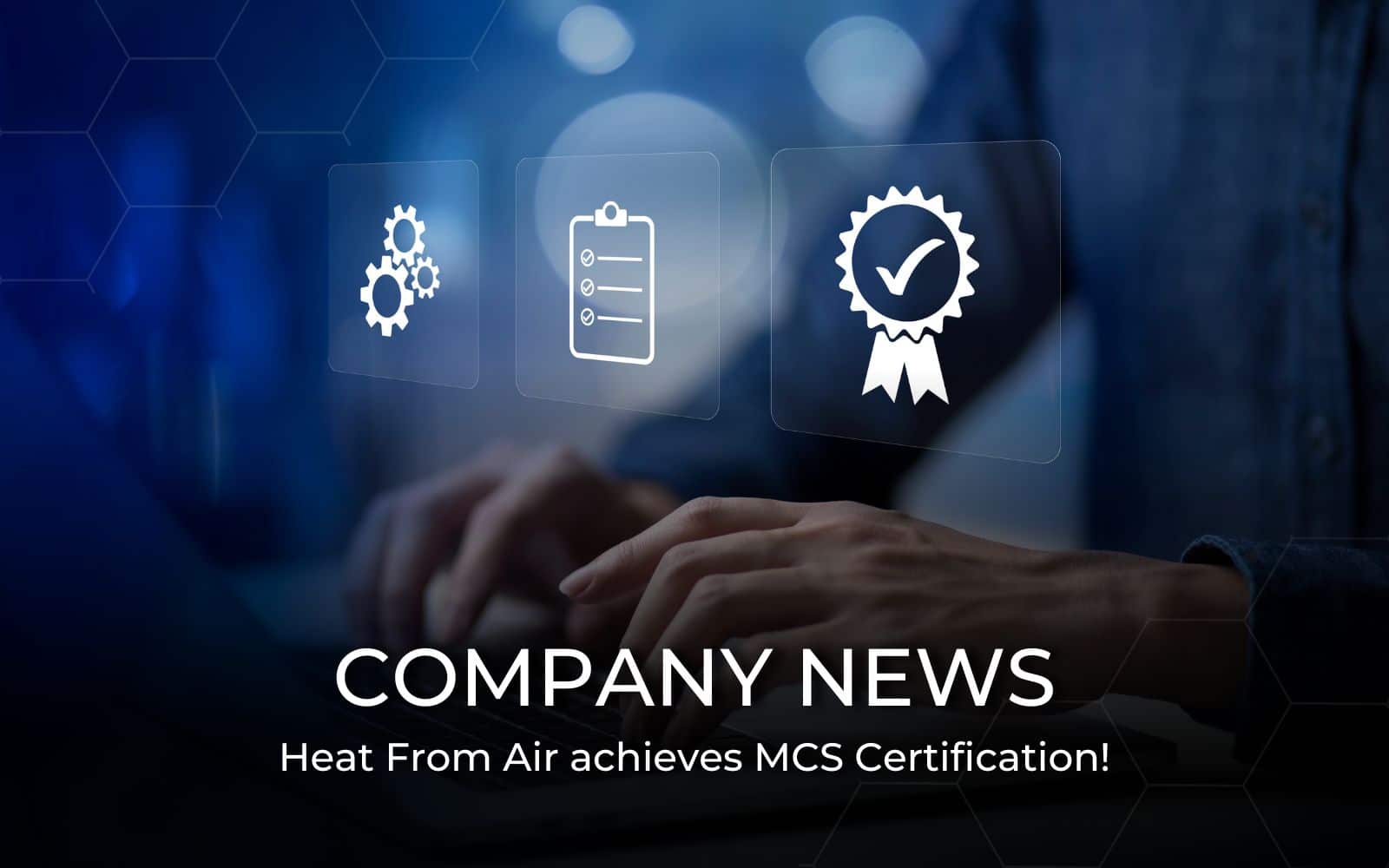As the drive for sustainability and energy efficiency intensifies, commercial air source heat pumps (ASHPs) have become a popular choice for heating and cooling in commercial environments.
This comprehensive guide introduces commercial air source heat pumps, explains how they work, highlights their benefits, and compares them with other heating and cooling systems. If you’re searching for a renewable way to heat or cool your commercial portfolio, this is the commercial air source heat pump guide for you!
Introduction to Commercial Air Source Heat Pumps.
Air source heat pumps are innovative systems that provide both heating and cooling by transferring heat from the outside air into a building during the winter, and vice versa in the summer. These systems are becoming increasingly popular in both commercial and domestic settings such as office buildings, schools, hospitals, homes and retail spaces due to their efficiency and environmental benefits.
BOOK YOUR FREE SITE SURVEY!
Overview of How Air Source Heat Pumps Work.
Air source heat pumps operate on a basic refrigeration cycle, consisting of four main components:
Evaporator: The refrigerant absorbs heat from the outside air, causing it to evaporate into a gas.
Compressor: The gaseous refrigerant is compressed, increasing its pressure and temperature.
Condenser: The hot, high-pressure refrigerant releases its heat into the building’s heating system, condensing back into a liquid.
Expansion Valve: The refrigerant passes through an expansion valve, reducing its pressure and temperature before it returns to the evaporator to begin the cycle again.
This cycle enables heat pumps to provide consistent heating or cooling as needed, efficiently transferring heat energy even in very cold temperatures. Scandinavia is a perfect example of heat pumps operating effectively even when temperatures drop far below zero degrees!
Benefits of Using Air Source Heat Pumps in Commercial Settings.
Energy Efficiency: ASHPs are remarkably efficient, often achieving a coefficient of performance (COP) of 3 to 4, meaning they produce three to four units of heat for every unit of electricity consumed. This efficiency translates into significant energy savings when compared to traditional heating and cooling methods such as gas boilers.
Cost Savings: Although the initial installation cost of ASHPs can be higher than traditional heating systems, the long-term savings on energy bills and maintenance make them a cost-effective solution over time. You could be looking at anywhere from £15,000 for a commercial heat pump installation!
Dual Functionality: ASHPs can provide both heating and cooling, eliminating the need for separate systems. This makes them highly versatile for various commercial environments that require year-round climate control. The perfect example is a retail store or a busy office where indoor air is crucial for maximising productivity.
Environmental Impact: By utilising ambient air as a heat source, ASHPs reduce the reliance on fossil fuels, leading to lower greenhouse gas emissions and supporting sustainability goals.
Low Maintenance: ASHPs generally require less maintenance compared to traditional heating systems. Regular servicing and occasional checks are usually sufficient to keep them running efficiently. We recommend once a year as a standard!
Improved Indoor Air Quality: ASHPs do not produce combustion by-products such as carbon monoxide, enhancing indoor air quality and creating a healthier environment for building occupants.

Comparison with Other Heating and Cooling Systems.
When considering different heating and cooling systems, air source heat pumps offer several distinct advantages:
Gas Boilers: Traditional gas boilers are less efficient and rely on fossil fuels, resulting in higher carbon emissions. ASHPs, with their higher COP and use of electricity, offer a eco-friendlier and more cost-effective alternative.
Electric Resistance Heating: Electric resistance heating systems convert electricity directly into heat, yielding a COP of 1. ASHPs, with a COP of 3 to 4, are far more efficient and therefore cheaper to run.
Oil Boilers: Like gas boilers, oil boilers are less efficient and more polluting. Additionally, the fluctuating price of oil can make operating costs unpredictable. ASHPs, by contrast, offer stable and lower operational costs.
Ground Source Heat Pumps (GSHPs): GSHPs are highly efficient but require significant ground excavation for installation, which can be costly and disruptive. ASHPs are easier and less expensive to install, needing only access to the outside air.
Split-System Air Conditioners: While effective for cooling, split-system air conditioners are not designed for heating. ASHPs provide both heating and cooling, making them a more versatile and comprehensive solution.
Final Thoughts.
Commercial air source heat pumps represent a cutting-edge solution for modern heating and cooling needs. Their energy efficiency, cost savings, versatility, and environmental benefits make them an ideal choice for businesses aiming to reduce their carbon footprint and operational costs. By understanding how ASHPs work and how they compare to other systems, businesses can make informed decisions that align with their sustainability goals and financial objectives.
If you want to take advantage of renewable heating, just contact the friendly team at Heat From Air and we will handle everything for you. Follow our journey on LinkedIn and Instagram too for handy tips and tricks.
Your green future starts here!
Get in touch to receive your FREE site survey!
Article Content
WANT TO SAVE £7,500?
Recent Articles:
Newsletter Sign Up
Keep up to date with latest news and industry insights.





